Why is there synergy between generative artificial intelligence and distributed ledger technology? While the answer to such a question seems like it should be complex, it is relatively simple. The two solutions play off each other exceptionally well, compensating for weaknesses and enhancing strengths. Can they resolve scalability pain points once and for all?
How Generative AI Addresses Scalability Challenges
Blockchain pros who find innovative ways to leverage generative AI can address some of this decentralized ecosystem’s most significant pain points.
Automates Smart Contract Development
Developing secure, robust smart contracts is essential — a single coding error could facilitate reentry attacks or recursive loops. However, it’s time-consuming. Generative AI lets developers automate much of the process. For example, they could create synthetic datasets for testing or produce code. Streamlining these tasks improves scalability.
Increases Blockchain Transaction Speed
Consensus mechanisms, block size and users’ computing power limit throughput. It is an apparent pain point because even the most well-known projects claim higher maximum transactions per second (TPS) than they have. For instance, while Avalanche reported having 4,500 TPS, its actual speed was 2.01. Even Bitcoin gets just 4.18 TPS.
Generative AI can create and optimize compression algorithms to reduce transaction data size, optimizing network resource allocation. It can also improve consensus mechanisms by simulating various protocols and scenarios. The more effective those are, the higher the project’s theoretical maximum TPS.
Enhances Public Blockchain Privacy
Despite the blockchain’s inherent immutability and transparency, public peer-to-peer networks have privacy risks and may inadvertently expose sensitive information. Decision-makers could use generative AI to develop or enhance cryptographic systems, ensuring robust encryption. Alternatively, the model could selectively hide details based on predefined parameters.
Lightens Administrative Workloads
The problem with decentralized finance is that administrative work is spread out, effectively making accountability work on an honor system. Research shows generative models can automate up to 65% of routine administrative tasks and external inquiries, making them ideal for lowering entry barriers and streaming time-to-completion.
AI Techniques Avoid Compromising the Fundamentals
Blockchain enthusiasts can leverage several AI techniques to enhance throughput, security and privacy. A combination of parallel distributed computing and distributed ledger technology can split problems into isolated chunks without compromising the blockchain’s security or decentralized nature.
For instance, predictive analytics powered by generative AI can forecast network congestion or block trades. It can consider how events like halving or stock market changes may affect things, producing its output in a conversational, text-based format. Users can ask it questions to receive real-time insights instead of plugging numbers into it.
Data-driven adaptation is another AI technique that enhances scalability without compromising the fundamentals. Introducing machine learning capabilities into the blockchain enables dynamic output and responses. Users can update predefined parameters or training data to effectively future-proof their model.
Examples of Generative AI and Blockchain Synergy
Already, the synergy between generative models and distributed ledger technology is apparent. In 2022, 40% of business owners reported they planned to invest nearly $5 million into blockchain technologies. Innovation in this space will happen with or without the average user’s help — and those who innovate early and better will come out on top.
While generative AI and the blockchain are relatively new technologies, several companies have already developed synergistic solutions. For instance, Symbiont — a financial technology company — uses the blockchain for training to create the ultimate predictive tool. It sold its technology for over $2 million in 2023 and planned to reinvest the windfall into development.
Another company, AI BlockChain, has used AI and the blockchain to develop a cloud platform. It leverages its suite of tools to improve peer-to-peer architectures and enhance distributed ledger technology. Its algorithm-based agents automatically manage the chain with minimal manual oversight to ensure it remains secure and immutable.
Companies like these have the right idea — these integrations have broad implications for the blockchain ecosystem. Innovation kickstarts trends that could propel peer-to-peer networks into the mainstream. Moreover, developing proprietary solutions in the new AI age can help startups carve out a space for themselves in this competitive space.
Innovation Is Key to Scalability
Why should blockchain enthusiasts capitalize on the synergy between generative models and distributed ledger technology? Blockchain is a platform for the future, so forward-thinking people are needed to develop exceptional solutions for scalability. Innovation is necessary for peer-to-peer trading to become cost-effective and fast enough to break into the mainstream.
Read Also: BlackRock and Microsoft to Launch $30B AI Infrastructure Fund



